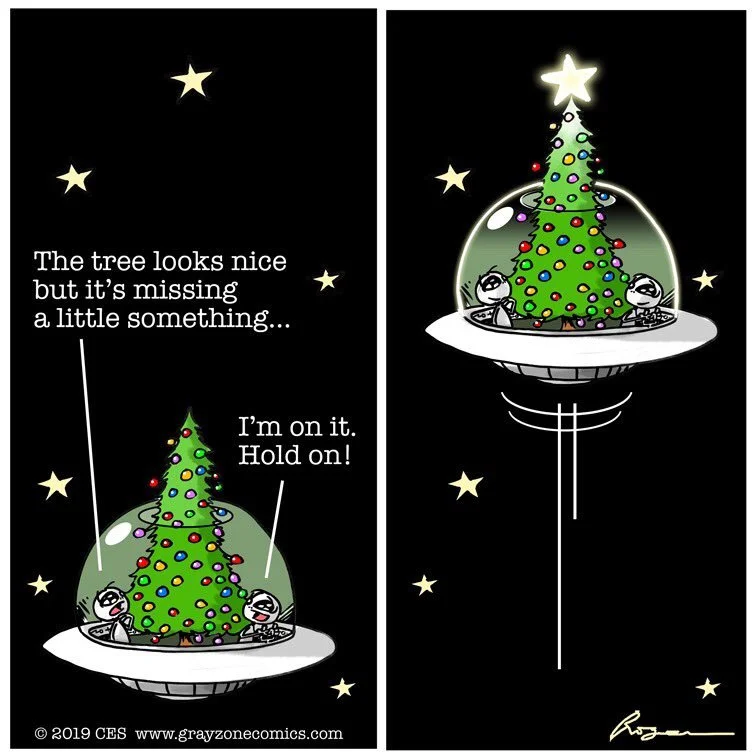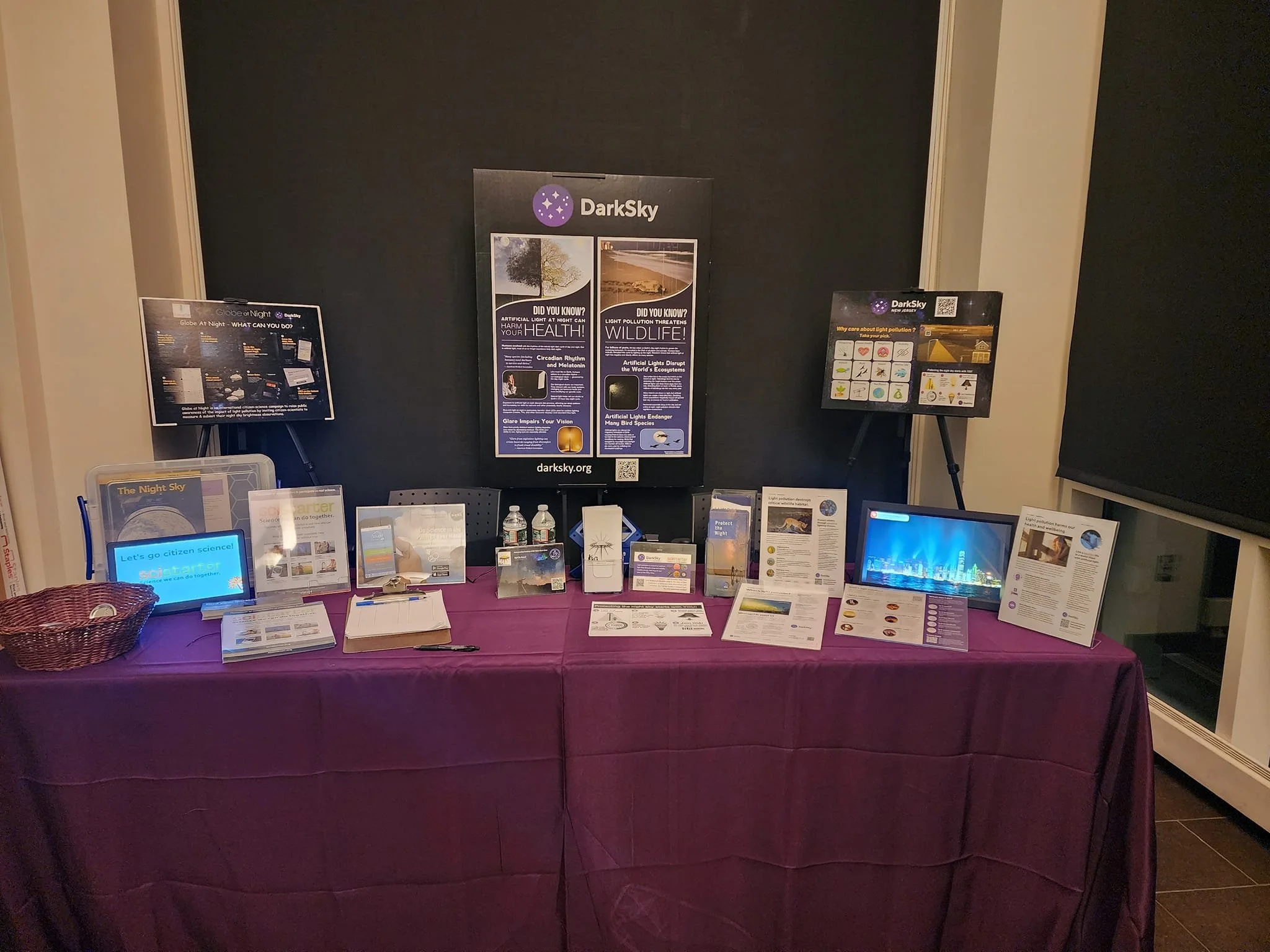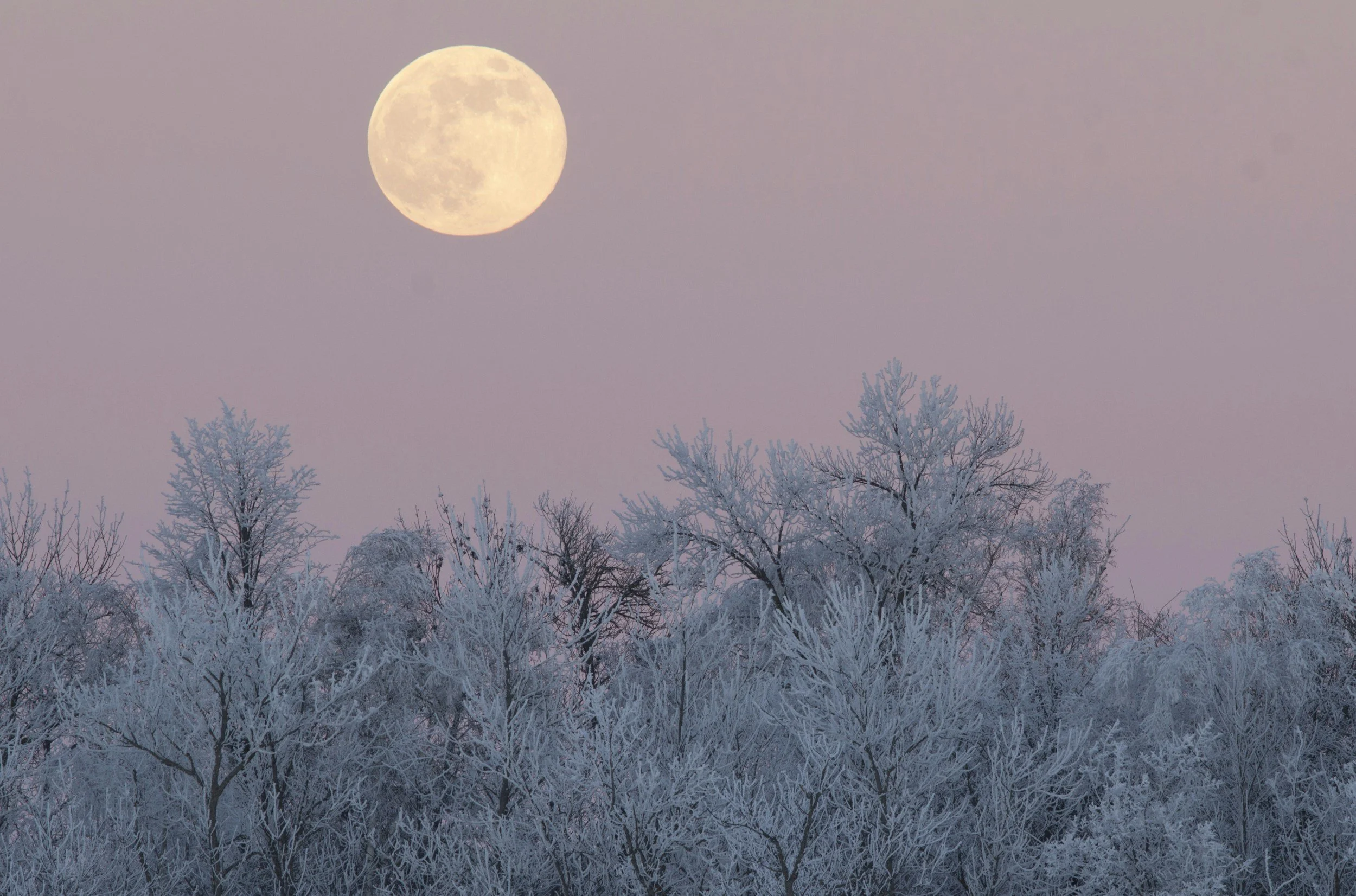Astral Projections Online December 2024
Check our Website for updated content at www.astra-nj.com
Club Presentations Wanted:
Does anyone have any astronomy items of interest to share with the membership?
Please let us know at Club Contacts.
Club dues and membership. If you renew after March 31 you will be renewed as a new member.
ASTRAL PROJECTIONS ONLINE (APO for short) is an email-linked publication for members only. If you exit APO to the club website or other resources you will need to use the emailed link again to get back to it. If you wish to retain a copy please bookmark or refer back to the email. We will make all efforts to post by the first week of the month.
Submissions Welcome: Members are invited to submit articles, photos, news, or stories for inclusion with Astral Projections Online. Please contact the ASTRA Webmaster.
Event Calendar
EVENT Cancellations: Members will receive email notifications of an event cancellation.
Upcoming December ASTRA Meeting
ASTRA's next meeting will be Friday, December 13, 2024, at 7 PM EST. Jim Webster will be providing the presentation for our December meeting.
Upcoming Star Parties
February 22, 2025 - Jakes Branch - 6 PM
Upcoming Public, County & State Park Presentations 2024
Public Outreach Presentations, if any member wishes to support ASTRA outreach efforts with the public, please let Vinny, Ro, or Jim know of any interest. Additional help for these events is always appreciated.
County and State Park presentations require a registration fee, call the hosting park to reserve.
None scheduled
Website Updates …
Please visit our club website. We continue to have additional updates, if some content would be useful to members please let us know.
Wishing all ASTRA Members, your families, and everyone that has supported us this year, a Merry Christmas and Happy Holidays.
“May you never be too grown up to search the sky on Christmas Eve”
popular quote, Charles Dickens
ASTRA Meeting -
December 13 at 7 PM
Jim Webster will present a review on Smart Telescopes for our December meeting. We will meet at 7 PM in the planetarium meeting room.
Membership renewal time
December is the time to start renewing your ASTRA membership for 2024.
Forms can be found on the website or here.
Call for Photos
We are looking for any star parties, events, or astro images for 2024. We’ll present them at our December meeting.
Event Reports
November Star Party
Jakes Branch November 9. We had a good public turnout with a projected headcount of 100.
From the event report on Slack submitted by Rosemarie Spedaliere. - Thank you to everyone who came out last night to help at the star party. We had so many people it was hard to estimate how many there were. As always members of Astra stepped up and showed them a good time. I always know I can count on all of you thank you. Now we have a few months off until next time clear-skies to you.
November ASTRA Meeting Summary
For our November meeting, with 25 members in attendance, Rosemarie Spedaliere provided a presentation on comets. No images from the meeting.
County Park Presentations
Cape May Dark Skies
Jim and Gloria Webster had a table set up for the Cape May Dark Skies event on November 8 at the Cape May Convention Center. The focus was on Dark Skies and light pollution and the SciStarter project Globe At Night. We also provided information on ASTRA as well. Cape May Adubon, South Jersey, and West Jersey Astronomy clubs were also in attendance. The Cape May environmental committee stopped counting at 400+ guests with many unknowns that went straight to the telescopes. The Cape May environmental committee chair mentioned they would like to hold additional events with more presenters moving into the main hall.
We were also informed that Cape May is working on updating their light pollution ordinances.
Members Submitted Articles & Items
Whatever it is, how you tell your story online can make all the difference.
Contact: Jim Webster, ASTRA President and Webmaster, regarding submissions.
The Moon: Our Nearest Neighbor
Let’s explore some interesting features, facts, or myths about our nearest neighbor, the Moon. Without it, life on Earth would be totally different, if not at all.
Christmas Full Moon
December full moon is referred to as the Cold Moon and for 2024 will occur on December 15 at 4:02 AM.
But when was the last full moon on Christmas Day?
The last time was in December of 2015 before that was in 1977. This rare event will not occur again until 2034. Image by: Unsplash
Apollo 8
Back in 1968, NASA had an Apollo mission to the moon during Christmas time. Apollo 8 mission started on December 21 and lasted until December 27. On this flight were Astronauts Frank Borman, James Lvell Jr, and William Anders.
There were several notable occurrences for this mission. It was the second manned Apollo mission, it was the first time man left Earth’s gravitational influence, and the first manned flight to the moon. They orbited the Moon ten times before returning to Earth.
While orbiting the Moon on Christmas Eve the astronauts provided a Christmas Eve message on a live television broadcast.
Outreach material below is distributed free for public outreach.
Around The Web
Dark Sky News
Dark Sky New Jersey will be presenting a review on the impact of light pollution in and around New Jersey for the Association of New Jersey Environmental Commissions on the evening of December 10 at 7 PM.
There is a fee to attend this event online. Registration is at: ANJEC
DarkSky New Jersey now has a Facebook page.
State Bill A2196
The New Jersey State Lighting Bill is back with the New Jersey state assembly with some modifications that were made to the bill. For more information the link to the bill is available: https://www.njleg.state.nj.us/bill-search/2024/A2196
EarthSky - NASA testing underwater robots to explore ocean worlds
When Europa Clipper reaches Jupiter in 2030, it'll aim an array of powerful instruments toward Jupiter’s ocean moon. During 49 flybys, it'll look from afar to spot any signs that the ocean beneath Europa's icy crust might sustain life. Meanwhile, back on Earth, teams are hard at work, developing underwater robots that could plunge into the watery depths of the ocean inside Europa and other ocean worlds. This fall, a team at NASA’s Jet Propulsion Laboratory - using a swimming pool at Caltech - tested a series of underwater robot prototypes.
On the lighter side of astronomy …
For more go to NASA Jet Propulsion Laboratory webpage: What’s Up: Skywatching Tips From NASA
This article and images are distributed by NASA Night Sky Network
The Night Sky Network program supports astronomy clubs across the USA dedicated to astronomy outreach.
Visit nightsky.jpl.nasa.gov to find local clubs, events, and more!
November’s Night Sky Notes:
Spot the King of Planets
By David Prosper
Updated By Kat Troche
Jupiter is our solar system’s undisputed king of the planets! Jupiter is bright and easy to spot from our vantage point on Earth, helped by its massive size and banded, reflective cloud tops. Jupiter even possesses moons the size of planets: Ganymede, its largest, is bigger than the planet Mercury. What’s more, you can easily observe Jupiter and its moons with a modest instrument, just like Galileo did over 400 years ago.
NASA’s Juno mission captured this look at the southern hemisphere of Jupiter on Feb. 17, 2020, during one of the spacecraft’s close approaches to the giant planet. This high-resolution view is a composite of four images captured by the JunoCam imager and assembled by citizen scientist Kevin M. Gill. Credit: NASA, JPL-Caltech, SwRI, MSSS | Image processing by Kevin M. Gill, © CC BY
Jupiter’s position as our solar system’s largest planet is truly earned; you could fit 11 Earths along Jupiter’s diameter, and in case you were looking to fill up Jupiter with some Earth-size marbles, you would need over 1300 Earths to fill it up – and that would still not be quite enough! However, despite its formidable size, Jupiter’s true rule over the outer solar system comes from its enormous mass. If you took all of the planets in our solar system and put them together, they would still only be half as massive as Jupiter all by itself. Jupiter’s mighty mass has shaped the orbits of countless comets and asteroids. Its gravity can fling these tiny objects towards our inner solar system and also draw them into itself, as famously observed in 1994 when Comet Shoemaker-Levy 9, drawn towards Jupiter in previous orbits, smashed into the gas giant’s atmosphere. Its multiple fragments slammed into Jupiter’s cloud tops with such violence that the fireballs and dark impact spots were not only seen by NASA’s orbiting Galileo probe but also by observers back on Earth!
Look for Jupiter near the Eye of the Bull, Aldebaran, in the Taurus constellation on the evening of December 15, 2024. Binoculars may help you spot Jupiter’s moons as small bright star-like objects on either side of the planet. A small telescope will show them easily, along with Jupiter’s famed cloud bands. How many can you count?
Credit: Stellarium Web
Jupiter is easy to observe at night with our unaided eyes, as well-documented by the ancient astronomers who carefully recorded its slow movements from night to night. It can be one of the brightest objects in our nighttime skies, bested only by the Moon, Venus, and occasionally Mars, when the red planet is in opposition. That’s impressive for a planet that, at its closest to Earth, is still over 365 million miles (587 million km) away. It’s even more impressive that the giant world remains very bright to Earthbound observers at its furthest distance: 600 million miles (968 million km)! While the King of Planets has a coterie of 95 known moons, only the four large moons that Galileo originally observed in 1610 – Io, Europa, Ganymede, and Calisto – can be easily observed by Earth-based observers with very modest equipment. These are called, appropriately enough, the Galilean moons. Most telescopes will show the moons as faint star-like objects neatly lined up close to bright Jupiter. Most binoculars will show at least one or two moons orbiting the planet. Small telescopes will show all four of the Galilean moons if they are all visible, but sometimes they can pass behind or in front of Jupiter or even each other. Telescopes will also show details like Jupiter’s cloud bands and, if powerful enough, large storms like its famous Great Red Spot, and the shadows of the Galilean moons passing between the Sun and Jupiter. Sketching the positions of Jupiter’s moons during the course of an evening – and night to night – can be a rewarding project! You can download an activity guide from the Astronomical Society of the Pacific at astrosociety.org
Now in its eighth year, NASA’s Juno mission is one of just nine spacecraft to have visited this impressive world. Juno entered Jupiter’s orbit in 2016 to begin its initial mission to study this giant world’s mysterious interior. The years have proven Juno’s mission a success, with data from the probe revolutionizing our understanding of this gassy world’s guts. Juno’s mission has since been extended to include the study of its large moons, and since 2021 the plucky probe, increasingly battered by Jupiter’s powerful radiation belts, has made close flybys of the icy moons Ganymede and Europa, along with volcanic Io. What else will we potentially learn in 2030 with the Europa Clipper mission?
Find the latest discoveries from Juno and NASA’s missions to Jupiter at science.nasa.gov/jupiter/
Originally posted by Dave Prosper: February 2023
Last Updated by Kat Troche: November 2024
Let’s Explore Space - What’s in the Sky December 2024
M33 - Triangulum Galaxy
The Triangulum Galaxy is a spiral galaxy 2.73 million light-years from Earth in the constellation Triangulum. It is catalogued as Messier 33 or NGC 598. Wikipedia
Stars: 40 billion
Distance to Earth: 2.723 million light-years
Discoverer: William Parsons, 3rd Earl of Rosse
Coordinates: RA 1h 33m 50s | Dec +30° 39′ 37″
Apparent mass: ~50 billion M☉
Constellation: Triangulum
Magnitude: 5.72
M33, also known as the Triangulum Galaxy or Pinwheel Galaxy, is a spiral galaxy in the constellation Triangulum.
M33 was probably discovered by Italian astronomer Giovanni Battista Hodierna before 1654. He listed it in his work regarding cometary orbits and admirable objects of the sky. Charles Messier independently re-discovered the galaxy on the night of August 25, 1764.
A magnitude +5.7, M33 can be viewed with the naked eye from a dark site and is widely regarded as the most distant permanent object that can be seen without optical aid. The galaxy is best seen from Northern Hemisphere locations during October, November, and December.
A good starting point to locate M33 is the Great Square of Pegasus. Start by focusing on its northeastern star Alpheratz (α And - mag. +2.1). Although it lies at one corner of the square, Alpheratz is officially designated as belonging to Andromeda. Next, move 15 degrees northeast to the red-giant star Mirach (β And). At mag. +2.1, Mirach is the same brightness as Alpheratz. Then imagine a line from Mirach moving in a southeasterly direction for 11 degrees until you reach alpha Tri (α Tri - mag. +3.4). This is the southernmost star of the Triangulum triangle and just over halfway along this line is M33.
Under dark skies, binoculars reveal a large mist without detail. An 80mm (3.1-inch) scope shows the galaxy as a very large diffuse patch of light, covering much of the field of view with a slightly brighter center that's best viewed using low powers. A medium-size 150mm (6-inch) or 200mm (8-inch) scope enhances the core and brings out some mottling. A larger telescope of at least 300mm (12-inch) aperture is required to reveal the spiral structure, along with dark dust lanes, knotty patches of nebulosity, and other subtle features. For the budding astrophotographer, M33 is a rewarding target with spiral arms and brighter nebulae relatively easy to capture.
Tonight’s Sky: December
Step outside on a cold December night when the stars shine bright to find the Big Dipper, Cassiopeia, and Cepheus. They will help you locate a binary star system, a fan-shaped open star cluster, and a variable star. Stay tuned for space-based views of a ragged spiral galaxy, an open star cluster, and an edge-on galaxy.
Visit the STScI which produces Hubblesite.org video overviews for Tonight’s Sky.
They can be found both on Facebook and stsci.edu.
Submissions Welcome
Members are invited to submit articles, photos, news, or stories for inclusion with Astral Projections Online. Please contact the ASTRA Webmaster.
















